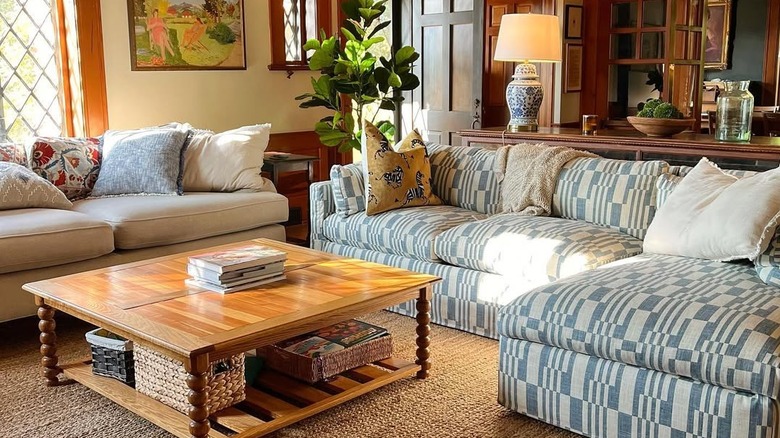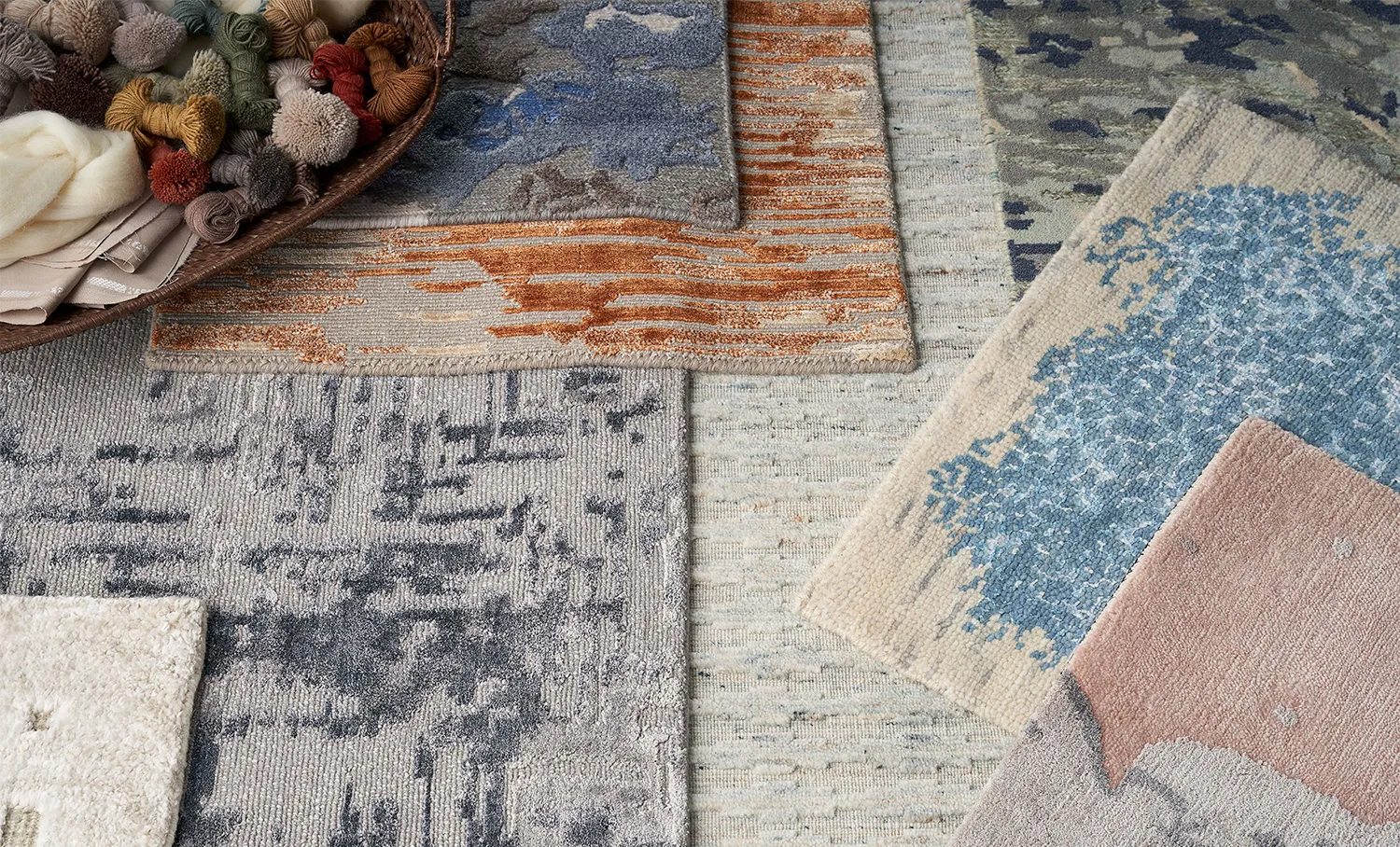Erin Napier, the renowned designer and co-host of HGTV’s Home Town, has built her career on transforming homes with warmth, character, and timeless appeal. Along with her husband Ben Napier, Erin has become a beloved figure in the world of home renovation and design. Her approach to home décor focuses on a mix of traditional, rustic, and contemporary styles, all while maintaining a sense of comfort and style that feels both inviting and practical. However, as a seasoned designer, Erin has seen enough of certain furniture trends that she believes no longer belong in today’s homes.
While Erin’s aesthetic often reflects a love for authentic, durable, and enduring furniture pieces, she has voiced frustration with some of the overly popular trends in the design world. Let’s take a look at some of the types of furniture that Erin Napier has expressed being tired of seeing in homes.
1. Overly Industrial-Style Furniture
Industrial design has been a dominant trend in interior design over the past decade. Characterized by exposed metals, concrete, and raw, unfinished wood, it’s often used to create a sleek, modern look with an edge. However, Erin has been vocal about her exhaustion with this style, especially when it’s used too liberally.
While she acknowledges the appeal of industrial accents in certain spaces, such as a metal chandelier or industrial-style light fixtures, Erin finds that an overuse of harsh, utilitarian materials can make a home feel cold and impersonal. This type of furniture often lacks warmth and a sense of history, something Erin values deeply in her design philosophy.
Erin prefers pieces that feel more timeless and have a sense of craftsmanship. “It’s not just about making a statement, but about making a home feel lived-in and comfortable,” she says. Her advice is to mix in elements that reflect personality and warmth rather than leaning entirely into the industrial aesthetic.
2. Fast Furniture and Cheap, Trendy Pieces
One of the things that Erin finds frustrating is the prevalence of cheap, trendy furniture that has flooded the market in recent years. The rise of fast furniture — inexpensive, mass-produced pieces designed to mimic high-end looks without the price tag — has made it easy for people to fill their homes quickly and cheaply. While this type of furniture is tempting due to its affordability and convenience, Erin warns that it often leads to a lack of character in the home.
These pieces are often designed to follow the latest trends, which means they have a limited lifespan before they begin to look outdated. Moreover, fast furniture is rarely built to last, leading to waste and an unsustainable cycle of replacing pieces over time. Erin prefers to invest in pieces that are timeless and made with quality materials, so they can be enjoyed for years to come. She encourages homeowners to be thoughtful in their purchases, opting for well-made furniture that fits their space and has lasting appeal.
3. Matchy-Matchy Furniture
Erin is also tired of seeing homes filled with overly coordinated, matchy-matchy furniture sets. While there’s nothing wrong with creating a cohesive look, Erin believes that an overly symmetrical or uniform design can make a space feel stiff and uninspired. This approach often leads to homes that feel more like showrooms than personalized spaces that reflect the people who live there.
In her designs, Erin prefers a more eclectic approach, where different textures, colors, and styles are mixed together to create a sense of individuality. “You don’t have to match everything perfectly,” she says. By introducing contrasting elements, you allow the space to feel more dynamic and lived-in, rather than overly designed and predictable.
4. Overly Modern, Minimalist Furniture
Another trend that Erin has been known to steer clear of is overly modern, minimalist furniture. While minimalist design has its place, especially in smaller spaces or for those who appreciate sleek, clean lines, Erin believes that too much minimalism can make a space feel sterile and unwelcoming.
Erin is a fan of rooms that feel full and lived-in, with pieces that reflect history and personality. While she supports a clean aesthetic in the right context, she also advocates for incorporating furniture that brings warmth, texture, and a sense of history to a space. Vintage furniture, or pieces that have a story to tell, are often Erin’s go-to for creating a home that feels both stylish and inviting. Too much minimalism can strip away that comfort and soul.
5. Faux Vintage or “Rustic” Furniture
Erin has also expressed her dislike for furniture that tries too hard to mimic vintage or rustic looks but falls short of authenticity. There has been a surge in the popularity of faux rustic furniture that imitates the look of reclaimed wood or aged pieces but is made with artificial materials. Erin believes this can lead to a disingenuous feel in a home.
When it comes to rustic or vintage-inspired pieces, Erin advocates for authentic, well-crafted items that have character and history. “It’s not about making a space look old or rustic; it’s about finding things that feel meaningful,” she says. Faux rustic furniture often lacks that true character and can sometimes feel out of place in a space that’s meant to be both modern and comfortable.
6. Bulky, Oversized Furniture
Finally, Erin has voiced her frustration with the overuse of bulky, oversized furniture. While large sofas and armchairs may seem appealing due to their comfort and grandeur, they can overwhelm a space, making a room feel cramped and less functional. In many cases, oversized furniture pieces are chosen based on their appearance rather than how they fit within the space, leading to cluttered, impractical layouts.
Erin prefers furniture that is proportionate to the room size, allowing for both comfort and functionality without overpowering the space. By choosing appropriately sized pieces and focusing on a balanced layout, homeowners can create rooms that feel spacious, inviting, and cozy, without sacrificing style.
Conclusion
Erin Napier’s design philosophy focuses on creating spaces that are timeless, comfortable, and filled with character. She has become known for her ability to transform homes with practical and thoughtful design choices that emphasize warmth over trendiness. While certain furniture trends may come and go, Erin’s advice is to focus on pieces that have meaning and longevity. Instead of following fleeting trends, she encourages homeowners to prioritize authenticity, quality, and style that lasts — elements that can truly transform a house into a home.



